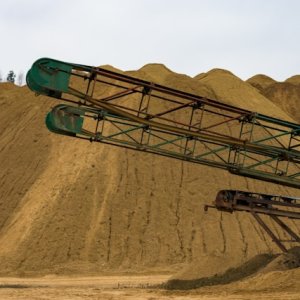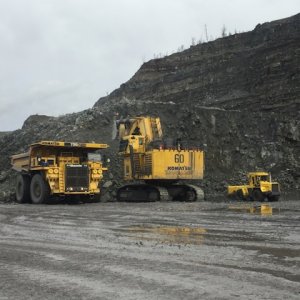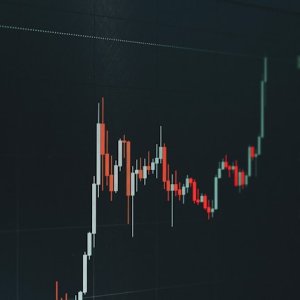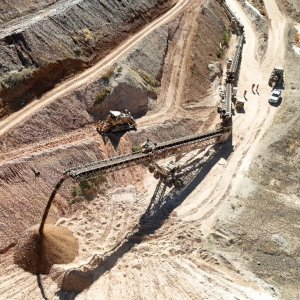Operator Progressing with Expansion Amid Security Concerns

Operator Progressing with Expansion Amid Security Concerns

STORY INLINE POST
Q: What is your perception of the Mexican mining industry?
GW: We are optimistic about the mining industry as a whole because we should soon enter a cycle of higher metal prices. However, we are concerned about rising issues in Mexico like security and the political risk of an election year. Some of our people have been threatened by local gangs but fortunately, we have not experienced more serious security issues like some other companies. If Mexico wants to take full advantage of the next upturn in metal prices and ensure that mining investment from Canada continues, the administration needs to do a better job resolving security issues. Many of our shareholders are worried about investing in a country where safety is such a large concern. We are committed to building and operating new mines in Mexico if the administration can improve the investment climate for foreign investors.
BC: Mexico is very fortunate to have an abundance of natural resource potential and good infrastructure to facilitate the development of the mining industry for the benefit of all. However, we see issues throughout Mexico, such as a high tax rate, slow VAT recovery, high security risk, slow government response, difficult land access issues, slow mine permitting and an increase in community activism. My perception of the mining industry in Mexico is that it is becoming increasingly more difficult to do business.
Q: What would you like to see the new administration prioritize to create a healthier mining industry in Mexico?
GW: Project permitting and VAT refunds both need to be faster, clearer and more transparent. We all know what the rules are but there are some bureaucrats who do not always follow these standards and this makes it hard for the industry. Better security, as I mentioned, should also be a priority. When President Peña Nieto came into power, security was a huge issue but he managed to smooth over many problems. We felt safer and more secure but this is changing again for the worse.
BC: We need to see positive actions in each of these areas of concern. The administration should reduce taxes, speed up VAT recovery, improve security and rule of law, improve land access, speed up permitting and provide more government services in the remote communities where most mines are located.
Q: How are you working to reduce your operational costs over the next couple of years?
GW: We are going through the process of making our mines more efficient and productive. We started in Guanaceví, which was our highest-cost mine in 2017. Once we achieve greater efficiency at this mine, we will implement a similar program to enhance productivity at El Cubo and Bolañitos. We are striving to make our mining processes leaner as quick as possible. We are simply trying to make better use of our equipment and people, which are our two biggest assets.
BC: We are reducing our operating costs in three ways. Historically we have embraced a philosophy of continuous improvement at each of our operating mines. We are focused on improving our metallurgical recoveries by doing more research and introducing different equipment and chemicals. We are also conducting programs to improve the productivity at each mine by upgrading our operational and management systems. But the biggest difference could be the construction of new, higher quality, lower cost mines.
Q: What have been the company’s biggest advancements when it comes to its mines in development?
GW: At El Compas, we expect to finish construction of the mine and refurbishment of the plant on time and budget in 2Q18 and we will strive for full production by the end of July and an official plant opening in 3Q18. Our largest development project is Terronera near Puerto Vallarta and we expect to start construction by the end of 2Q18 and production by the end of the 4Q19, so that 2020 will be the first full year of production. The company is investing US$11 million at El Compas and US$90 million at Terronera over the next two years and US$48 million into its three operating mines in 2018. We are forecasting 20 percent production growth in 2018 and 50 percent production growth once Terronera is up and running.
BC: We are building two new mines over the next three years to grow our production by more than 50 percent. Building the new El Compas mine on time and budget will be a big advancement this year. We also plan to update our prefeasibility study for Terronera, receive final government permits, raise debt financing and start construction at Terronera in 2018.
Q: What potential do you foresee in the Mexican M&A market?
GW: The M&A market in the Mexican mining industry has good potential and even though exploration and mining are now very competitive here, there are still many areas to explore and mines to acquire. Another challenge is that many surface areas have been thoroughly explored so the next step is to explore for ore deposits and veins hiding below surface. One example is Guanaceví, a mine that ran out of ore in 2003, but using modern geological knowledge, we were able to discover seven new ore bodies hiding below surface. We also found six new, thick and rich veins underneath Bolañitos, a mine that has been producing off and on for almost 500 years. Mexico has a tremendous amount of potential but it does take more and more time and money to discover underground deposits. Endeavour has a portfolio of exploration projects in Mexico on which we will spend US$11 million in 2018. We acquired our Parral properties in 2016 and discovered significant new mineral resources there in 2017. Parral is now our biggest exploration project in Mexico.
BC: I think the potential to discover new ore bodies and acquire new mining projects is still quite good in Mexico but with rising costs and rising risks, new mining projects have to be higher quality to be economical for development, so the M&A market is getting more and more difficult.
Q: What sustainability strategies does the company use to maintain healthy relationships with surrounding communities?
GW: We ensure an open dialogue with surrounding communities to understand what their needs are and to figure out how we can help them achieve their goals. We fund these programs along with the taxes we pay into the Mining Fund. Through these dialogues, we have realized there are two main factors that communities want us to focus on: training and employment. The company prioritizes these elements along with scholarships and normal festivities within these communities.
BC: Our main sustainability strategy is to treat the local communities with respect as stakeholders in our business. That means starting early at each new mining project to meet the people, make friends and build relationships. Developing strong relationships involves communicating our plans and listening to feedback so that we can work with each community to help solve local problems and fulfil their desire to build a better living situation. We try to make a positive difference in people’s lives in several ways: through health, education, environment, culture and economics.




















